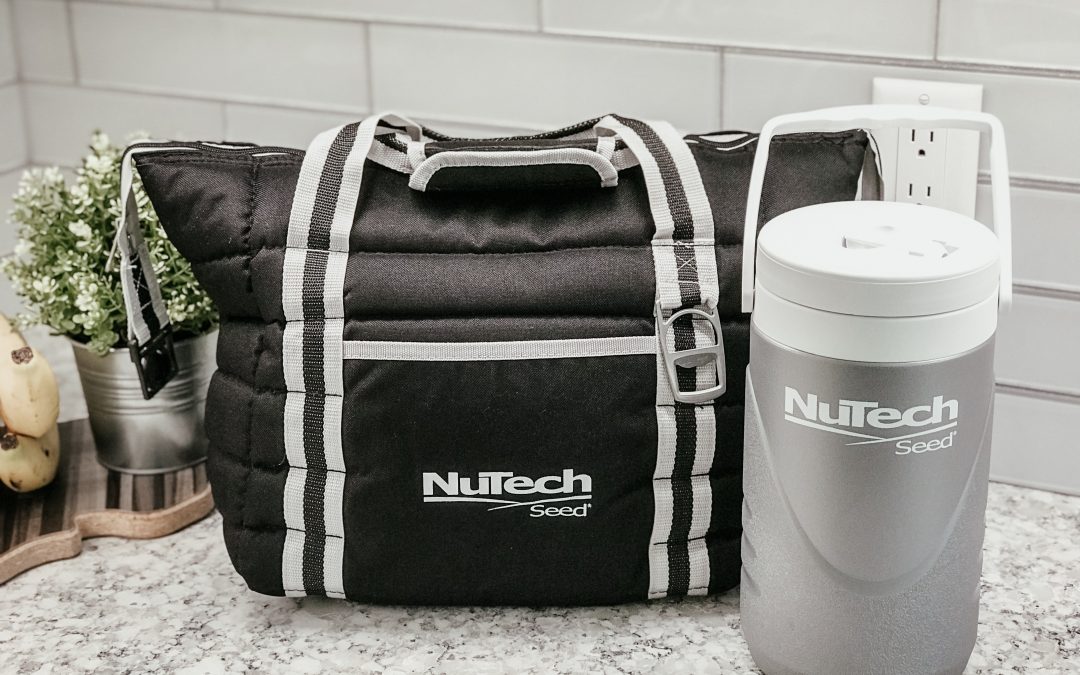With all the rain we’ve had, when a sunny day pops out, farmers swarm to the fields.
They’re racing the calendar to get everything in the ground – before Mother Nature’s next rainy downpour.
That fast and furious pace (doesn’t it seem like it gets faster every year?) means farmers need to be at their best. It is important that farmers are as well fueled as their tractors. But in this case, their fuel is healthy eating.
Healthy eating is particularly important during farming’s busiest times of planting and harvesting, where long, often stressful hours, require additional energy and focus. Rather than choosing a burger and fries, pack a lunch that includes lean protein, fruits, vegetables, whole grains and plenty of water. Make sure you take a break for lunch or dinner rather than eating on the run.
My mom used to faithfully plan the meals she drove to whatever field my dad and brother happened to be working – so as not to slow them down. Sometimes she’d take leftovers from last night’s dinner or sometimes she’d make sandwiches. She’d pack a picnic basket full of everything from paper plates and silverware to Dad’s favorite oatmeal raisin cookies — and a cooler that included drinks and snacks for later.
As a former farm reporter, I remember writing about a few meals that Farm Credit used to take to a winning farmer, where they even brought a table and chairs and grilled pork chops. That may be going above and beyond for most meals in the field, but I like the idea of making farmers stop to eat and take a moment to relax. Working ground or planting without breaks isn’t healthy for anyone. Farmers, like everyone else, need to take a minute to breathe and regroup. It’s safer — and healthier.
If you’re struggling to find healthy meals to take, here are some ideas.
- Pack a salad with leafy greens and veggies and topped with grilled chicken, tuna or slices of sirloin steak. Go easy on the dressing. The fat from the dressing can make a farmer feel sluggish and sleepy.
- Substitute whole grain bread for white bread for sandwiches. Fill with lean, lower-sodium turkey or peanut butter.
- Swap your soda for a water – and be sure and have plenty of it available. Don’t leave the house without a bottle or two of water. (Back in the day, Dad used to take a Thermos jug full of water, but that was before bottled water was so popular). Many times when we think we’re hungry, we’re actually thirsty.
- Change your portions – less meat, more vegetables. We tend to plan our meals around meat. Try instead to think of vegetables first, then add meat.
- Incorporate fruit into your breakfast – and don’t forget to start the day with breakfast.
- Do 5 to 7 minutes of stretching before you climb into the tractor cab to get your blood flowing.
- Add some additional green to the lunch pail – take veggies like cut up broccoli, celery and carrots with dip, or add some leafy green lettuce to your sandwich. Stuff celery with peanut butter and pack in a long, plastic container for a healthy snack. Or pack some string cheese and whole grain crackers like Wheat Thins or Triscuits.
- Pack a protein bar for a portable snack in the tractor cab.
- Replace dessert with fresh fruit. Go ahead and cut up apples, watermelon, or peel the Cuties (oranges) so they’re easier to eat.
- Incorporate a handful of nuts and grapes as a snack – pack in baggies for portion control and ease in eating in the cab.
- Don’t forget to take along hand sanitizer or wet wipes. Food safety is always a concern, and dirty hands can contribute to food-borne illnesses.
Charlyn Fargo
Springfield Hy-Vee Dietitian

